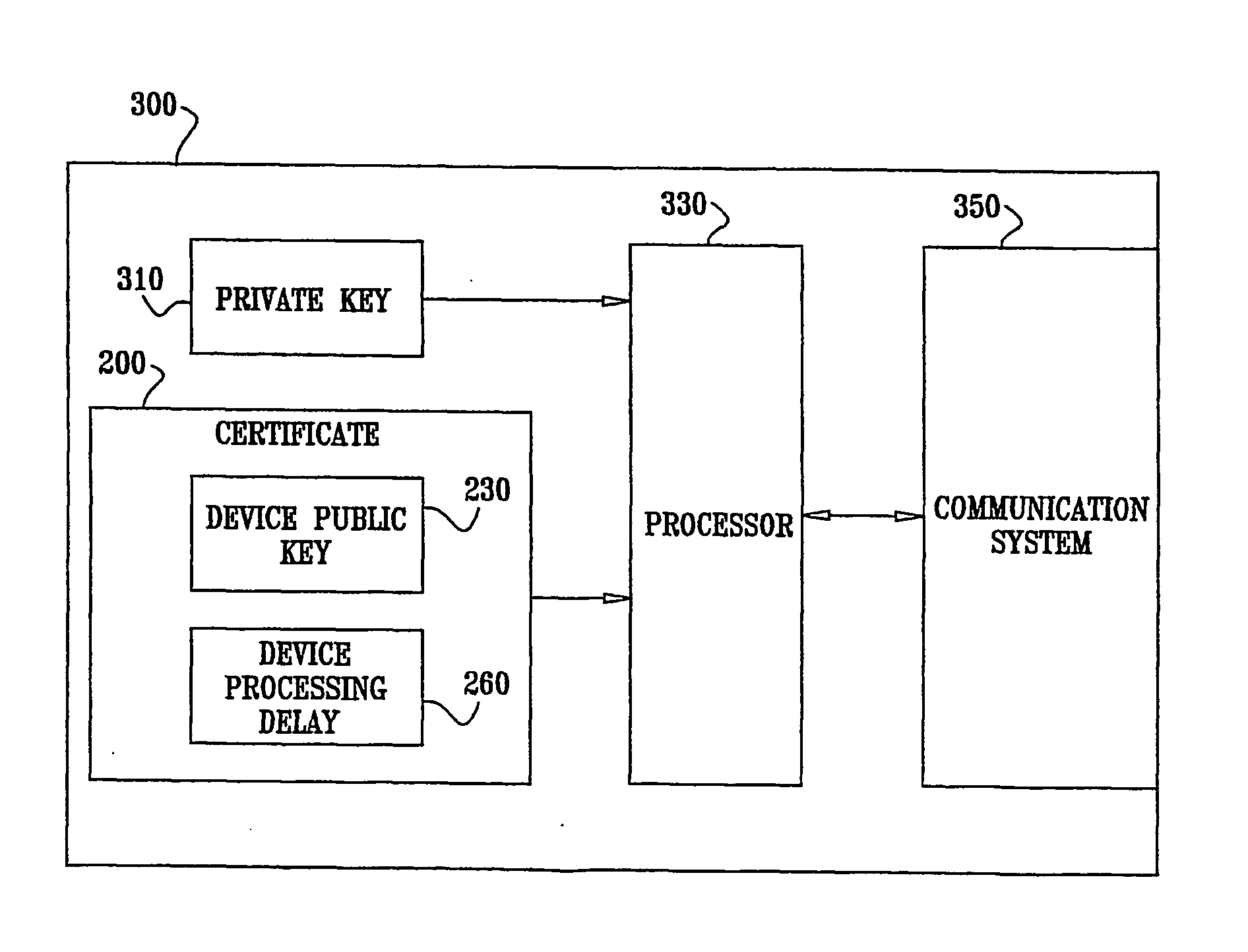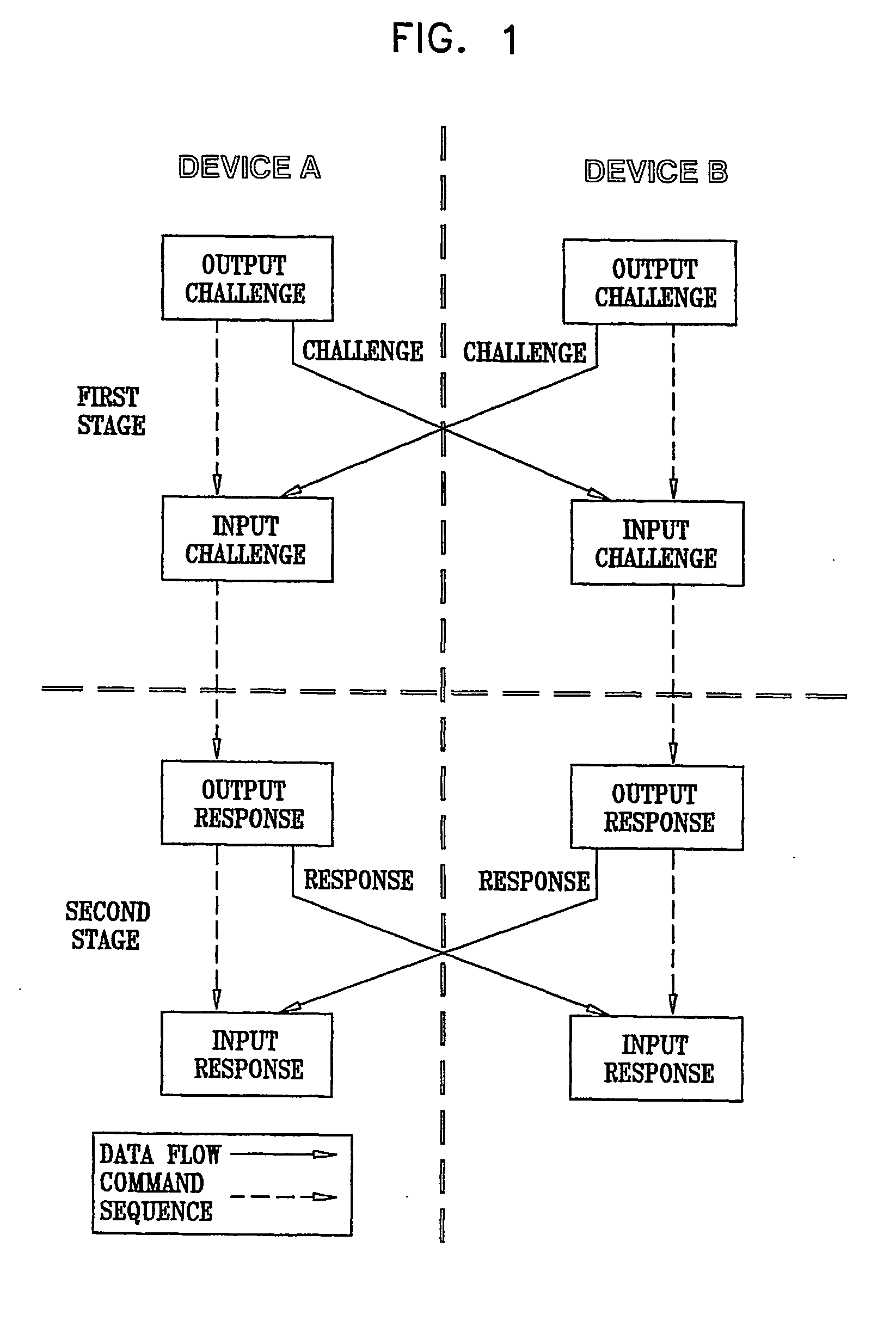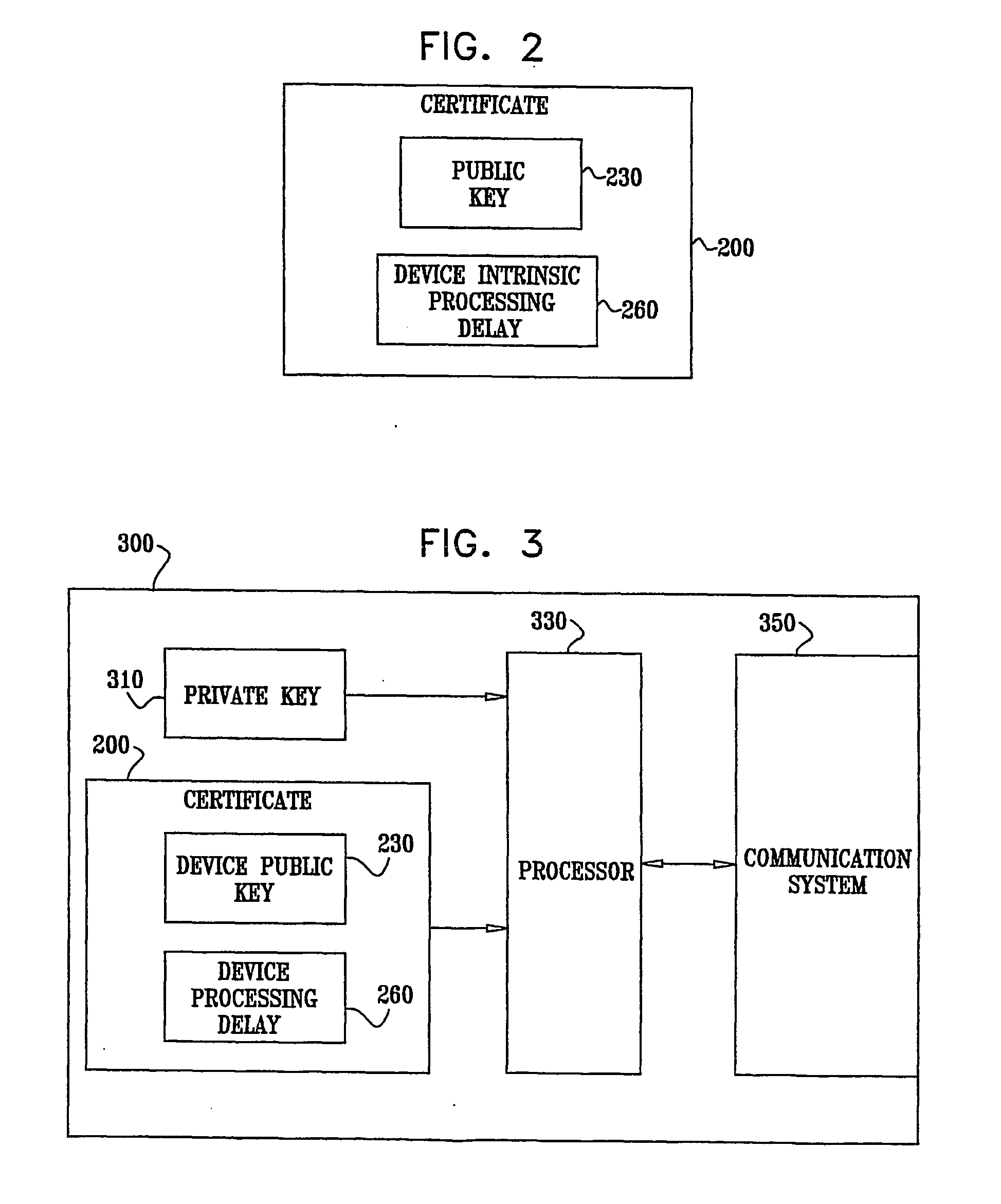System for Proximity Determination
a proximity determination and system technology, applied in the field of networks, can solve the problems of difficult separation of “network, difference in propagation delay between “external” network and “home”, and likely longer propagation delays in “home” network, so as to achieve the effect of minimizing hardware requirements
- Summary
- Abstract
- Description
- Claims
- Application Information
AI Technical Summary
Benefits of technology
Problems solved by technology
Method used
Image
Examples
Embodiment Construction
[0067] The concept of Secure Video Processor (SVP) is described in the document found on the World Wide Web at www.svpalliance.org / docs / FAQ.pdf. The SVP is proposed by the SVP Alliance, as described at www.svpalliance.org, for increasing content security in a Home Network environment and a Video On-Demand (VOD) environment. Typically, each SVP device has a Device Certificate, signed by an “Ancestor”. The Certificate contains various pieces of data relating to the device's properties and restrictions placed upon it, and also a public key. The device also has a private key paired to the public key, but such private key is preferably held in secret by the device.
[0068] Content secured by an SVP device, or a system using SVP devices, is scrambled and scrambling keys (or Control Words—CWs) and other control information is passed between individual SVP devices through a Secure Authenticated Channel (SAC).
[0069] As a precursor to SAC setup, any two SVP devices exchange certificates, and ...
PUM
 Login to View More
Login to View More Abstract
Description
Claims
Application Information
 Login to View More
Login to View More - R&D
- Intellectual Property
- Life Sciences
- Materials
- Tech Scout
- Unparalleled Data Quality
- Higher Quality Content
- 60% Fewer Hallucinations
Browse by: Latest US Patents, China's latest patents, Technical Efficacy Thesaurus, Application Domain, Technology Topic, Popular Technical Reports.
© 2025 PatSnap. All rights reserved.Legal|Privacy policy|Modern Slavery Act Transparency Statement|Sitemap|About US| Contact US: help@patsnap.com



